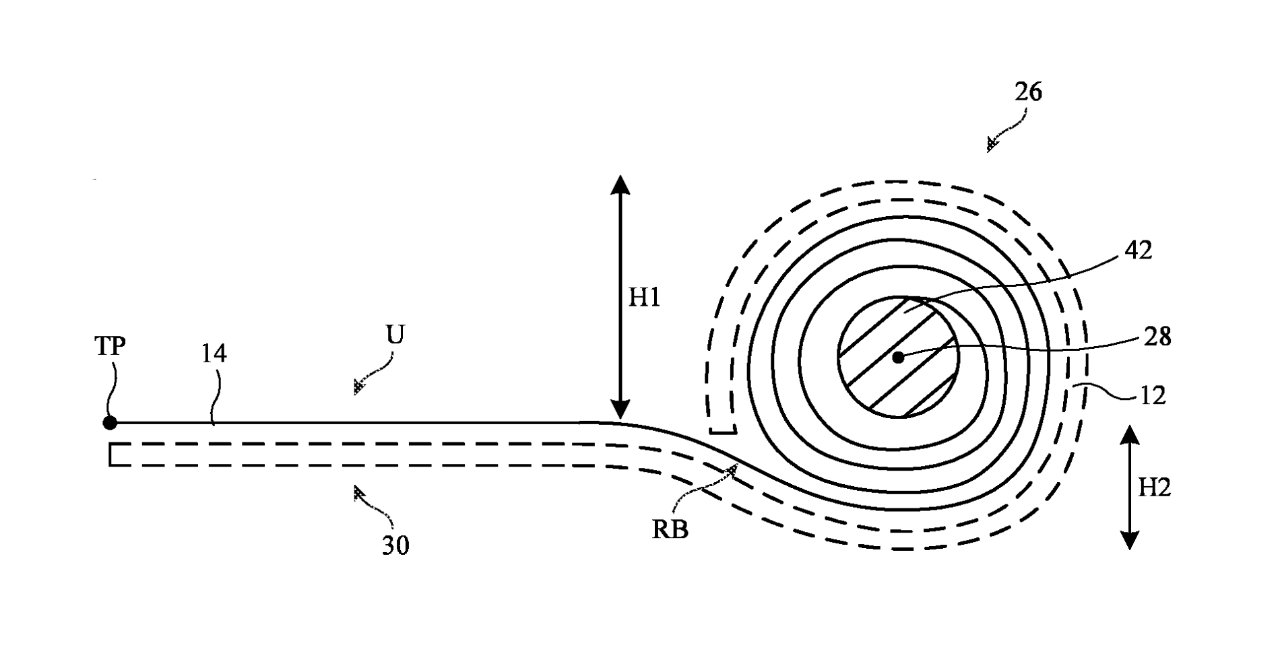An “iPhone Fold” may already be in Apple’s rear-view mirror, as the company is diligently pursuing the idea of an iPhone screen that can be rolled up when not in use.
In May 2023, AppleInsider described Apple as being like a dog with a bone for how it kept pressing on with rollable screen ideas. Two months later, it’s back again.
A newly-revealed patent application called just “Electronic Devices With Rollable Displays,” is less detailed than some of the previous filings. More than even patent applications that were primarily about folding screens and only mentioned rollable as an alternative, this one reads like a primer for the notion.
“An electronic device may have a rollable display,” it says. “The display may be moved between an unrolled state in which the display is planar and a rolled state in which a rollable portion of the display is rolled up for storage.”
“The display may have a display panel with a pixel array that produces images and a transparent protective layer that overlaps the pixel array,” it continues.
That transparent protective layer is interesting because Apple goes on to say that it may itself contain a layer of glass. And the “glass layer may be locally thinned in the rollable portion to facilitate rolling of the display.”
Just as with foldable phones, the issue is how to make a screen work, and keep working, when it is bent about some axis. This patent application describes in broad terms what’s required, and how it might be achieved.
“For example, a flexible (bendable) display… may be partly or completely rolled up so that [it] may be placed in a compact shape for storage and may be rolled out when it is desired to view images on the display,” continues Apple. “The display may be configured to apply compressive stress to the outwardly facing surface of the glass layer when the display is rolled up.”
“Compressive stress in the outwardly facing glass surface may help prevent damage to the display when the display is bent during rolling operations,” says the patent application.
This really is a very broad patent application so it goes little further into detail about managing the stresses on the material. But it does address how you would want a display to be flexible so it can be rolled up, yet not also bend or be damaged at a touch.
“For example, a layer of glass that is attached to the outer (front-facing) surface of [the] panel may be used to prevent display panel… from deforming and becoming damaged when a user’s finger, computer stylus, or other external object contacts [the] front side,” explains Apple. “Protective polymer layers and/or other protective layers may be formed as coatings on the glass layer help prevent scratching of the glass layer.”
The patent application also refers to “strain gauges, capacitive force sensors, resistive force sensors, etc,” which could be used. But then it goes on into the regular patent method of listing every conceivable point that could ever be related to the idea.
However, this time that includes mentioning sensors in the display. Some are overlapping, such as variations on capacitive touch sensors, but overall Apple lists around a dozen sensor possibilities.
That includes “sensors for measuring three-dimensional non-contact gestures (“air gestures”). So this display could be unrolled and then react to a user waving over it.
If this were the only Apple patent application regarding rollable displays, it could even read like a catch-all one more concerned patenting an idea to prevent rivals getting to it. As it is, though, Apple has been working the idea since at least 2017, and seems to keep coming back to the notion like it’s a favorite.
This latest filing credits two inventors, Que Anh S Nguyen and Christopher D Jones. Nguyen’s previous work includes research into strengthening iPhone screens, while Jones has worked on systems to automatically detect display cracks and damage.
This story originally appeared on Appleinsider


